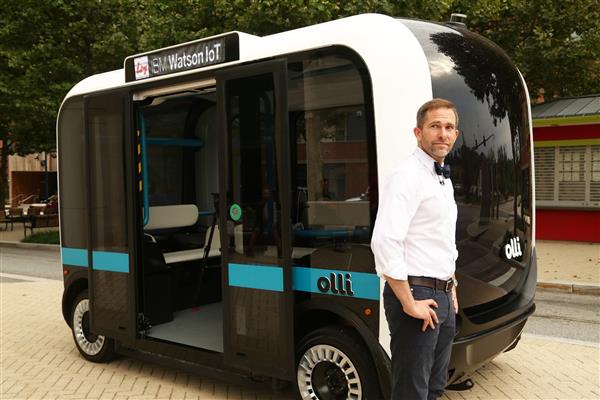
Just when you think we have reached the limits of technology, something like Olli comes along. Who is Olli? Olli is not a ‘who’, it’s a ‘what’. In fact, Olli is the first autonomous electric vehicle manufactured via a 3D printing process. The creation of an Arizona company that defines innovation in car making made its début in Washington DC on June 16 (2016).
Olli was designed and manufactured by Local Motors, a company known for pursuing revolutionary vehicle designs through crowdfunding. They raised a load of money to develop Olli in the hope that the process they came up with would revolutionise the manufacturing of the autonomous vehicles in the future. Make no mistake about the goals of Local Motors; rather than being a company looking to mass-produce vehicles, they are all about creating new design and manufacturing processes other car makers can utilise.
Olli Is a Real Wonder
Olli is a first-of-its-kind vehicle that is truly a wonder. At the top of the list of its impressive achievements is the 3D printing process that created this minibus. By utilising 3D printing technology, Local Motors created a working vehicle at a fraction of the cost of conventional design and manufacturing.
Beyond the production process and its price, Olli is outfitted with IBM Watson’s cognitive learning system that will make it possible for the vehicle to be eventually completely autonomous. The technology still has a way to go, but it has already proven itself worthy of further development for autonomous vehicles.
For the record, Olli will be giving free demo rides in Washington DC throughout the summer. Local Motors hopes to use the time to continue the learning and design process that will make future iterations of their autonomous bus better. Meanwhile, they are also simultaneously developing an autonomous 3D printed car they call the Strati.
Are There Limits to 3D Printing?
One look at Olli and Strati are enough to cause us to wonder whether there are any limits to 3D printing. If you can 3D print a minibus or car, it seems like you could print just about anything else. For example, let’s start with something as basic as the bed in your home.
Bed manufacturing right now consists of a somewhat labour-intensive process that includes manufacturing the various components and then putting them all together. There is some amount of labour whether the bed is being made out of metal, wood, plastic, or any combination thereof. 3D printing eliminates all of the separate manufacturing and assembly, as well as the labour that goes with it. You could 3D print the bed frame as either a single piece or multiple pieces that are assembled by the consumer or even buy a basic cheap mattress & bed on-line here then get decorative extras such as head board and decorative touches printed.
Moving on to more complicated things, why couldn’t we start 3D printing medical devices? Or how about construction components for both residential and commercial construction? It seems like the only limits on 3D printing are the size and possible restrictions on the use of plastics for certain items. Other than that, there does not appear to be a ceiling preventing us from climbing as high as we want on the 3D printing ladder, in fact we might just print the ladder!
Innovation is a wonderful thing. It is that which has allowed us to push the boundaries of technology so far in such a short amount of time. Leading the charge today is 3D printing. Perhaps someday Olli will make a trip across the Pond to pay a visit here in the UK. Or maybe we will print our own version using the technology and design processes created by Local Motors. Either possibility would be fine.


